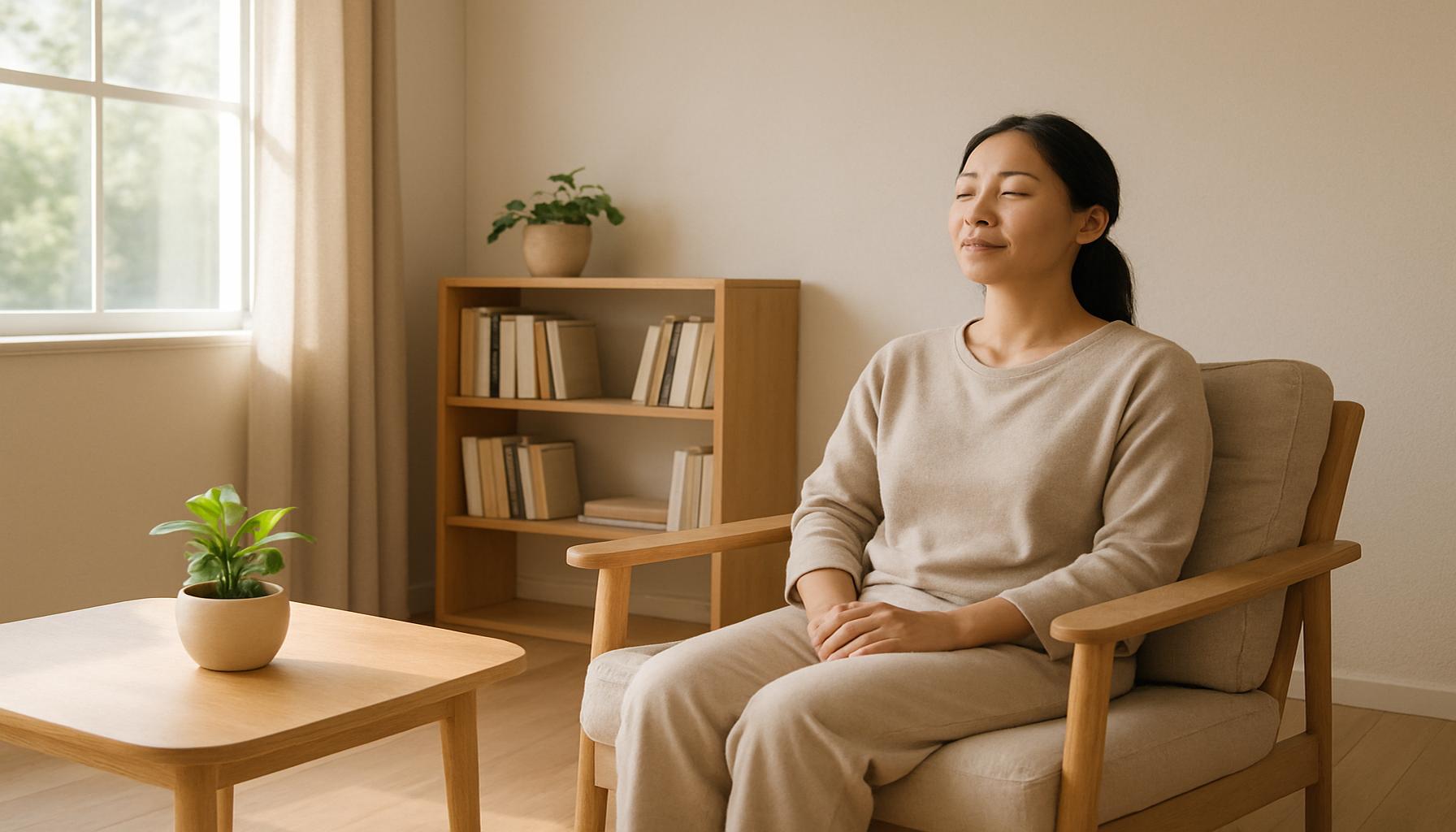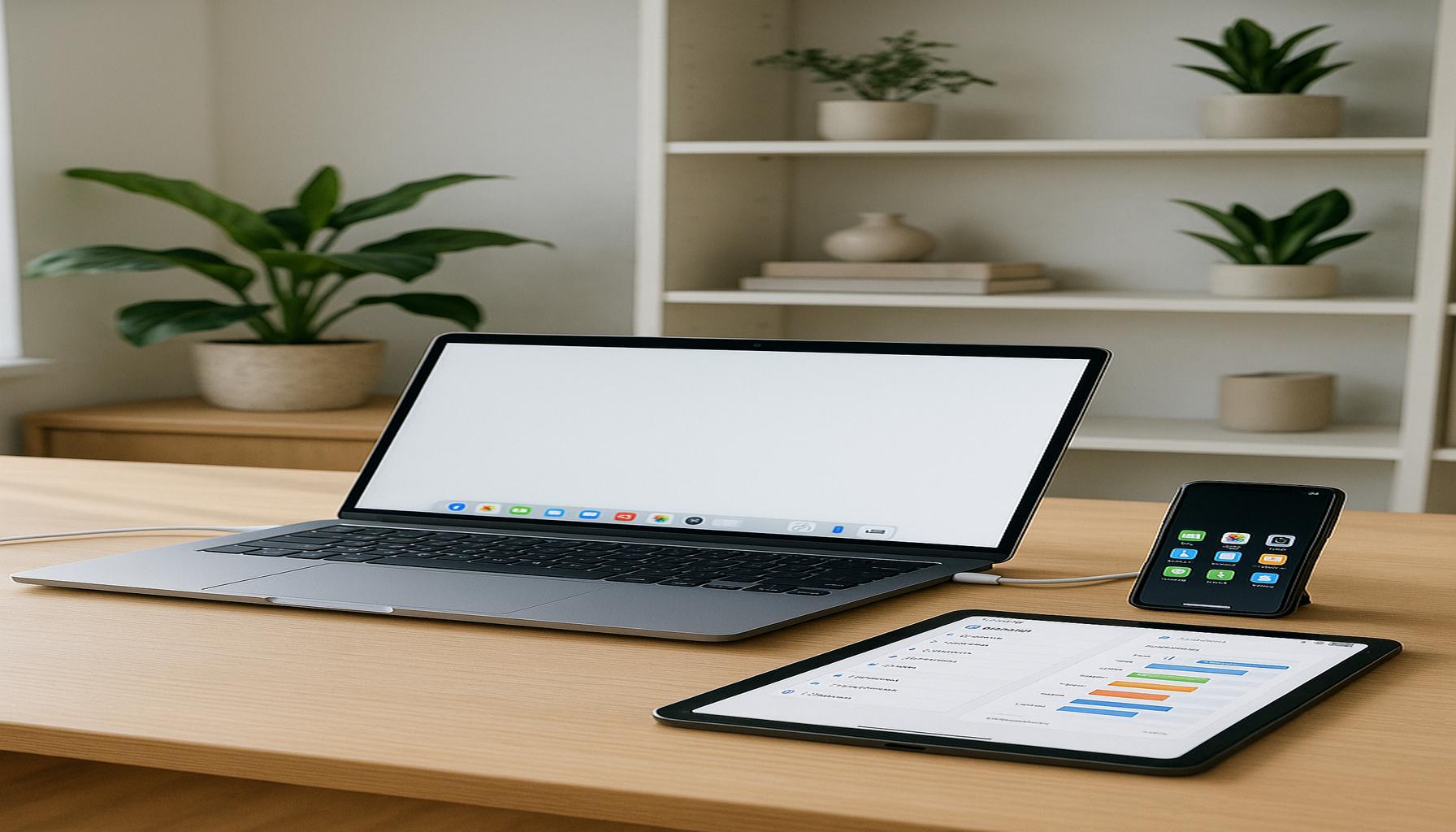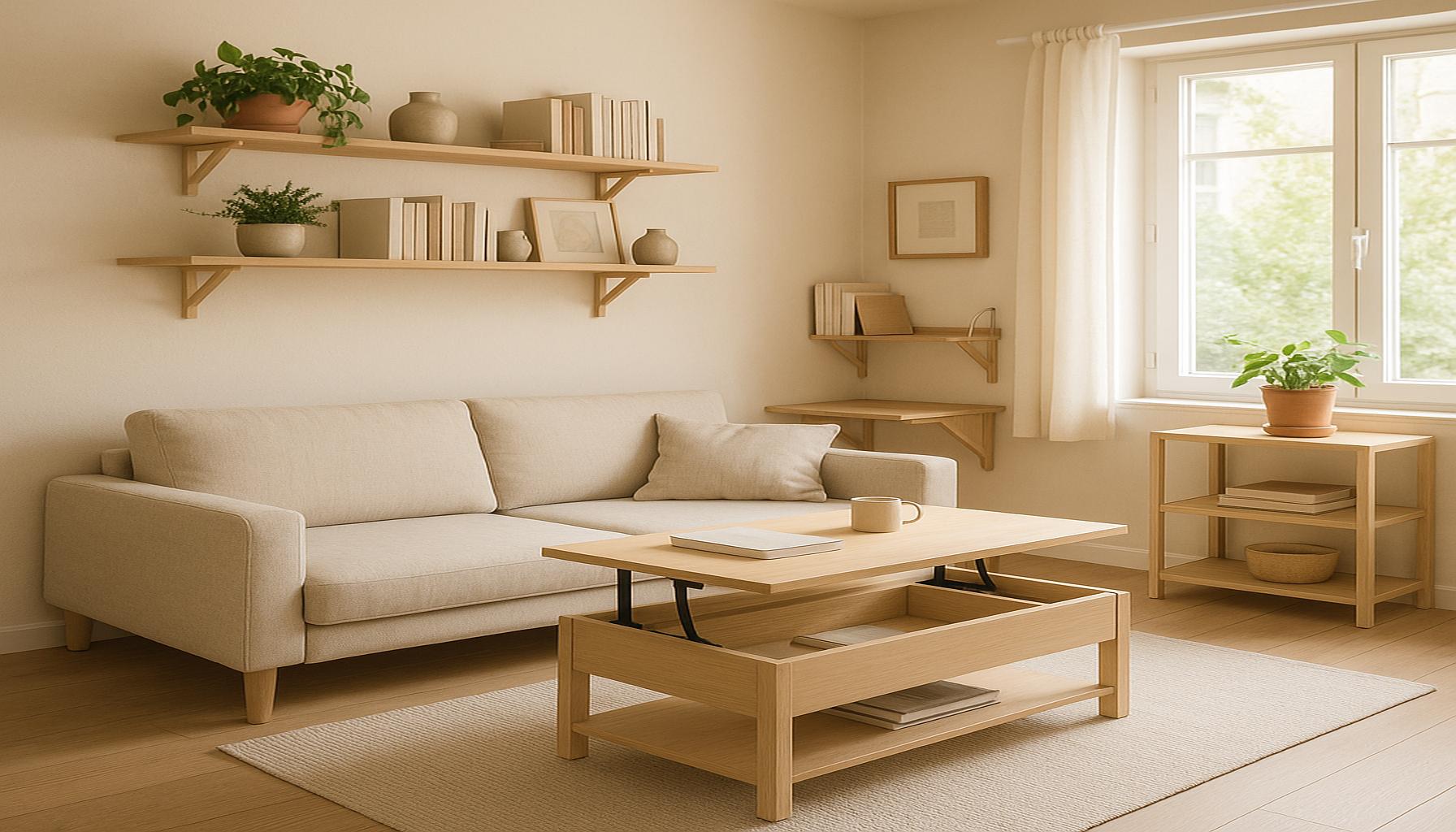Decluttering Compulsions: Identifying and Overcoming Unnecessary Consumption Habits

The Impact of Decluttering Compulsions
In a world driven by consumerism, decluttering compulsions can often spiral out of control. Many individuals find themselves trapped in a cycle of unnecessary consumption, accumulating items that serve little purpose. This behavior can lead to physical clutter and emotional distress, affecting everything from mental health to productivity. Studies indicate that living in cluttered environments can elevate stress levels and even impact decision-making abilities, resulting in a vicious cycle of acquisition and emotional overwhelm.
Identifying the roots of these compulsions is crucial for breaking free from this cycle. Common triggers include:
- Emotional buying during stressful moments: This often arises when consumers turn to shopping as a coping mechanism during difficult times. For example, someone might purchase new clothing or gadgets after a stressful day at work, only to later feel guilt for the impulse buy.
- Social pressures to maintain appearances: In a culture that often equates possessions with success, individuals may feel compelled to buy items that showcase their status or align with social trends. The rise of social media magnifies this effect, as users frequently display their curated lives filled with luxury items.
- Perceived scarcity influencing impulsive purchases: Marketing strategies often create the illusion of scarcity, pushing consumers to believe that they must purchase now or risk missing out. This can be seen in limited-time offers or exclusive releases, further fueling impulsive spending habits.
Overcoming these habits requires a combination of awareness and strategy. Some effective approaches include:
- Setting specific decluttering goals: Instead of tackling an entire house at once, individuals can set manageable goals—such as clearing out a single closet or drawer each weekend—to gradually reduce clutter without feeling overwhelmed.
- Practicing mindfulness while shopping: Cultivating a mindful approach can involve pausing before a purchase to ask whether the item aligns with one’s values and long-term goals. This reflective practice can help mitigate impulse buys.
- Establishing a system for evaluating purchases: Implementing a ’24-hour rule’ can be beneficial; if a purchase isn’t necessary, waiting a day before buying allows for reflection and reduces impulse decisions.
As we delve deeper into this topic, we will explore how societal influences affect our consumption habits and offer insights on breaking free from compulsive buying behavior. Understanding these patterns is the first step toward a more intentional and fulfilling lifestyle. A conscious shift in consumption can not only declutter our physical space but also rejuvenate our mental well-being, leading to a more harmonious existence. By prioritizing intention over impulse, individuals can transform their lives, creating room for what truly matters.
DISCOVER MORE: Click here to uncover effective decluttering strategies

Understanding the Psychology Behind Decluttering Compulsions
To effectively tackle decluttering compulsions, it’s essential to understand the psychology that fuels unnecessary consumption habits. Emotional factors, historical context, and societal influences converge to shape our relationship with material possessions. Delving into these psychological aspects not only helps identify the root causes of such compulsions but also opens pathways to meaningful change.
Emotional triggers play a significant role in compulsive buying. For some, shopping becomes an outlet for managing feelings of loneliness, sadness, or anxiety. Recent studies reveal that nearly 70% of individuals engage in emotional shopping at least occasionally, often leading to regret and further emotional distress once the initial thrill of the purchase fades. These shopping sprees can generate an illusion of control or provide temporary comfort but can ultimately contribute to a cycle of guilt and additional consumption.
Environmental Influences on Consumption Habits
Social and cultural environments significantly shape our purchasing behavior. The prevalence of advertising and marketing strategies designed to provoke an emotional response cannot be overlooked. Everyday exposure to advertisements promotes the notion that ownership equals happiness. Furthermore, the rise of e-commerce and mobile shopping apps has made consuming easy and instantaneous. A survey conducted by the National Retail Federation found that 75% of consumers feel pressured to keep up with trends, which often leads to impulsive purchases that are later deemed unnecessary.
- Community and status: Social circles and community expectations often dictate our consumption habits. The pressure to align with peers, whether through fashionable attire or the latest gadgets, can drive unnecessary acquisitions.
- Fear of Missing Out (FOMO): The digital age has perpetuated FOMO, compelling individuals to acquire new items to avoid feeling left behind. This constant comparison often leads to compulsive buying just to keep up appearances.
- Office and home environments: Cluttered spaces can seed discontent and prompt individuals to treat symptoms rather than the root issue. Consequently, many choose to buy more storage solutions rather than effectively reorganizing.
As awareness of these influences grows, so does the necessity for strategies aimed at overcoming these compulsions. Identifying personal triggers is a fundamental step in the journey toward mindful consumption. By recognizing patterns on days of heightened stress or during specific social interactions, individuals can take proactive measures to mitigate their impulses. Another effective strategy is to adopt a minimalist mindset, which emphasizes quality over quantity and encourages individuals to consider the value of items they bring into their lives.
In our quest to break free from unnecessary consumption habits, understanding the psychological underpinnings is critical. By challenging the societal norms that govern our shopping habits and cultivating a more intentional approach to consumption, we not only reclaim our physical space but also nurture our emotional well-being. The journey toward decluttering is not just about clearing space; it’s a holistic endeavor that promotes overall health, happiness, and purpose. As we navigate through this topic, we will provide further insights and actionable tips to help individuals embrace a life free from the constraints of clutter and compulsiveness.
| Category | Description |
|---|---|
| Awareness of Triggers | Understanding the situations that lead to unnecessary purchases is crucial. |
| Creating a Spending Plan | Establishing a budget helps to focus on what is essential, thereby reducing impulse buying. |
Recognizing Triggers
Identifying the moments that compel individuals to seek out items they do not need is a significant first step toward overcoming decluttering compulsions. Common triggers include emotional states like boredom or sadness, social pressures, or even strategic marketing tactics that exploit those feelings. By recognizing these triggers, individuals can begin to address the underlying causes of their consumption habits.
Implementing a Spending Plan
Once triggers are identified, the next crucial phase is implementing a spending plan. This involves clearly delineating necessary expenses from discretionary spending. A well-structured budget not only limits impulsive purchases but also encourages mindful consumption, ensuring that one’s resources are allocated to what truly matters. Utilizing tools like spending apps or journaling can significantly enhance accountability.Proponents of decluttering suggest regularly revisiting one’s motivations and goals. These reflection points can reaffirm the commitment to minimizing unnecessary consumption and maintaining a more organized, fulfilling lifestyle. Furthermore, the emotional benefits of this reduction can lead to a greater sense of peace and clarity in one’s living space. Engaging in these proactive steps facilitates a deeper understanding of one’s habits, ultimately transforming one’s approach to consumption.By adopting a mindful attitude towards purchases, individuals not only reduce clutter but also cultivate gratitude for what they already possess, paving the way for sustainable living.
DISCOVER MORE: Click here to enhance your daily efficiency
Practical Strategies for Overcoming Decluttering Compulsions
Having identified the emotional and environmental factors driving decluttering compulsions, the next critical step involves implementing practical strategies that promote a mindful approach toward consumption. These strategies enable individuals to cultivate healthier habits, reduce clutter, and improve overall well-being.
Establishing Mindful Consumption Practices
Adopting a mindful consumption practice is essential in breaking the cycle of unnecessary acquisition. One effective technique is the 30-Day Minimalist Challenge, which encourages participants to eliminate a specific number of items from their possession each day. The challenge starts with one item on day one, two items on day two, and so on, creating a gradual shift in mindset while helping to confront the emotional investment tied to these items. This method not only fosters a sense of accomplishment but also highlights the items that genuinely hold value.
Additionally, implementing a “waiting period” before making purchases can effectively curb impulsive buying. By adopting a practice where one must wait 24 hours before acquiring an item, consumers often discover that the initial urge fades, allowing them to evaluate the necessity and longevity of their desire. This practice also aids in managing the emotional triggers that prompt unplanned purchases.
Redefining Value and Utility
To further combat unnecessary consumption, redefining the concept of value is crucial. Rather than merely acquiring items based on trends or recommendations, individuals should focus on quality over quantity. This means investing in fewer, higher-quality items that align with their values and needs. For instance, instead of purchasing fast fashion clothing that quickly fades in quality and appeal, investing in a staple wardrobe with durable and timeless pieces can enhance both personal style and budget management.
- Utilize the “One In, One Out” Rule: This strategy requires individuals to remove one item from their possession whenever they bring a new one in. It creates a balance, discouraging the accumulation of unnecessary items.
- Practice Gratitude: Regularly reflecting on what one already possesses can foster appreciation and diminish the desire for more. Keeping a gratitude journal that highlights satisfied needs and cherished items can help redirect focus from wanting more to valuing what you have.
- Engage in Mindfulness Meditation: Incorporating mindfulness techniques can aid in recognizing urges to shop as they arise. This awareness allows individuals to observe their thoughts without judgment, leading to more informed and purposeful decisions about purchases.
Building a Supportive Environment
Creating a supportive environment plays a crucial role in overcoming decluttering compulsions. Surrounding oneself with like-minded individuals who prioritize minimalism and intentional living can foster a sense of accountability and motivation. Joining local or online communities, such as minimalism groups on social media platforms, can provide encouragement and inspiration, while also offering a space for sharing tips and experiences.
Moreover, decluttering can be made easier by seeking professional help when needed. Hiring a professional organizer skilled in decluttering can provide not only hands-on assistance but also valuable insights into sustainable organization methods. These experts can introduce systems tailored to individual lifestyles, breaking the cycle of compulsive consumption by instilling disciplined habits.
Ultimately, the journey towards overcoming decluttering compulsions demands continuous self-reflection and effort. By applying these practical strategies and fostering societal connections that prioritize mindful consumption, individuals can move towards a more fulfilling existence unburdened by excessive material possessions.
DISCOVER MORE: Click here to simplify your life
Conclusion: Embracing a Mindful Lifestyle
In an era dominated by consumerism, the struggle with decluttering compulsions has become an increasingly common challenge for many individuals. As we navigate our possessions, battling the emotional and psychological factors tied to unnecessary consumption, it is vital to recognize that true fulfillment lies not in accumulating more, but in appreciating what we already have.
By adopting practical strategies for mindful consumption, such as participating in challenges that promote gradual decluttering or implementing waiting periods before purchasing, individuals can begin to reshape their relationship with material goods. The emphasis on quality over quantity can lead to a deeper understanding of value, encouraging sustainable habits that align with personal goals and upcoming needs.
Furthermore, creating a supportive environment through connections with like-minded individuals can provide motivation and accountability, making the journey toward minimalism less daunting. By participating in community-driven initiatives or even seeking professional guidance, individuals can develop a more sustainable approach to organization and consumption.
Ultimately, overcoming decluttering compulsions requires ongoing self-reflection, commitment, and a conscious shift in mindset. As you embark on this transformative journey, remember that it is about freedom, not perfection. By embracing a lifestyle of intentional living, you can foster greater appreciation for the things that truly add value to your life, enriching your experiences and nurturing a more meaningful existence.


